- Posted:April 13, 2014

Status Report - HERO: Week of 04.13
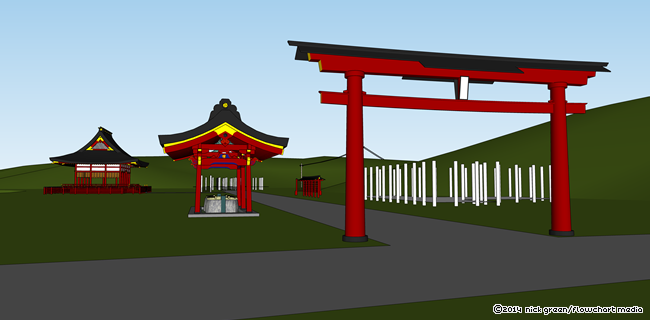 Shizen Shrine
Shizen ShrineShizen Shrine is a shinto shrine out on the tip of the Takeizumi Peninsula. The kami worshipped here is Hantougami, the goddess of the peninsula itself. It was first established in 796CE and has been rebuilt on a number of occasions as the structures age. The shrine buildings were initially constructed in the shinmei-zukuri architectural style best known as the style used for Ise Shrine, the holiest shrine in Japan dedicated to the sun goddess Amaterasu-omikami. Shizen Shrine was then updated to the gongen-zukuri style in 1127. This style is characterized by having the haiden (worship hall) and honden (sanctuary) connected under an 'H' shaped roof.
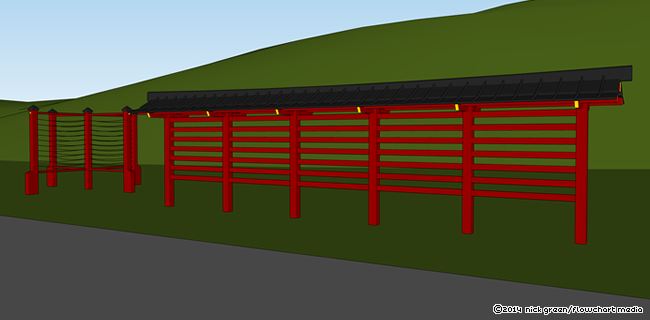 Ema & Omikuji Walls
Ema & Omikuji WallsWork this week has been on designing the shrine structures. The first two I built were the structures on which ema and omikuji are hung. Ema are wooden plaques that worshippers write their wishes on and then hang them on the designated structure. Omikuji are fortunes on strips of paper that run the gamut from Great Blessing to Great Curse. Bad fortunes are tied to the structure in hopes that the bad luck will remain there and be exorcised by the kami.
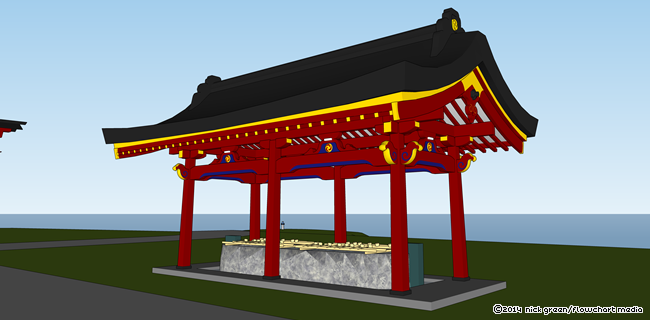 Chozuya
ChozuyaThe next structure I built was the chozuya (purification fount). This is a covered water basin where worshippers purify themselves before using the shrine by washing their hands and mouths with wooden dippers.
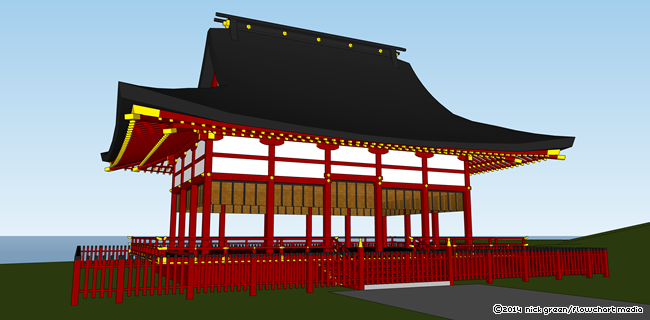 Kagura-den Exterior
Kagura-den ExteriorThe most recent structure I built was the kagura-den or dance hall. This is where sacred dance and music are offered to the kami during ceremonies and festivals. They also sometimes serve as stages for other performances like noh plays and shinto weddings. This stage plays an important role during kinatsu matsuri (Return of Summer Festival). This festival concludes the Golden Week celebrations in Takeizumi and transfers Hantougami between her winter yoroshiro in a giant boulder behind the shrine and her summer yorishiro in kasijima (Umbrella Island) out on the tip of the peninsula. Yorishiro are objects that attract kami and give them a space to occupy, turning them into shintai.
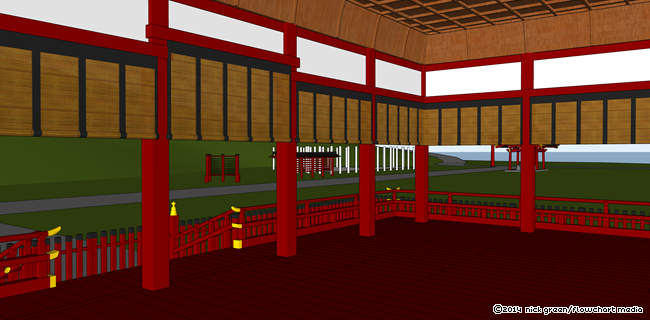 Kagura-den Interior
Kagura-den InteriorI have several more buildings to design for the shrine. One is the shrine office where administrative work is carried out and where charms and fortunes are sold. The other two buildings are the most important, the haiden and the honden. As I already mentioned, in the gongen-zukuri style these two structures are connected under the same roof. The haiden is the worship hall where worshippers make their offerings and prayers by ringing the bell. The honden is the sanctuary where the kami resides and is only entered by priests and miko. There are also a few setsumatsusha (auxilary shrines) where minor spirits are housed.
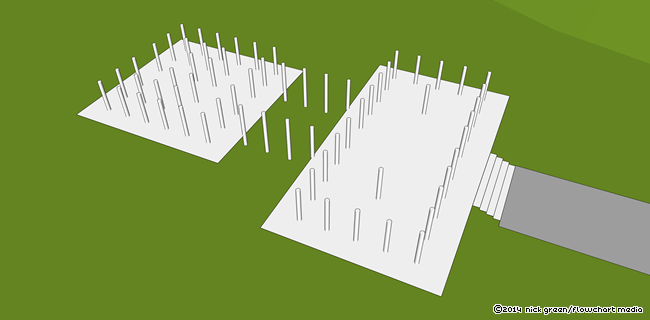 Site of Haiden & Honden
Site of Haiden & HondenAll images are unrendered, raw SketchUp models.
Nick

